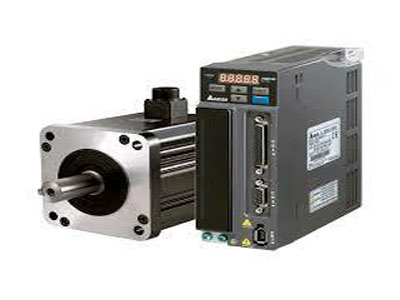Key Takeaway
Frequency plays a vital role in AC servo drives by directly influencing the speed and torque of the motor. The servo drive adjusts the frequency of the input voltage to control how fast the motor spins. A higher frequency increases the motor’s speed, making it ideal for applications requiring rapid movements, while a lower frequency decreases the speed for more precise and slower operations.
This ability to adjust frequency allows AC servo drives to provide smooth and accurate control over the motor’s performance. It ensures that the motor operates efficiently and meets the specific demands of the application, whether it’s in manufacturing, robotics, or other automation tasks. Proper frequency management is key to achieving optimal performance in AC servo drives.
The Basics of Frequency in AC Servo Drives
In AC servo drives, frequency plays a crucial role in controlling the operation of the motor. Frequency, measured in Hertz (Hz), determines how often the AC current cycles per second. In an AC servo system, the drive adjusts the frequency of the electrical input to control the speed and torque of the motor. Essentially, the frequency dictates the rate at which the motor’s magnetic field rotates, directly influencing the motor’s speed. A higher frequency results in a faster rotation of the motor’s shaft, while a lower frequency slows it down. Understanding this relationship between frequency and motor behavior is fundamental to effectively utilizing AC servo drives in various applications.

Impact of Frequency on Motor Speed and Performance
The frequency set by an AC servo drive directly influences the speed and torque of the motor. As the frequency increases, the speed of the motor rises in a proportional manner, allowing for quick and dynamic adjustments in applications that require real-time responsiveness. This is particularly useful in high-speed operations where the timing and precision of motor movements are critical. However, there is a trade-off between speed and torque.
As the motor speed increases due to higher frequency, the available torque tends to decrease, especially at lower frequencies where the motor may struggle to maintain its rated torque. This relationship means that careful frequency management is crucial for achieving the desired balance between speed and torque, ensuring the motor operates efficiently without compromising on performance. For precision applications, such as robotics or CNC machining, finding this optimal balance is essential to maintain accuracy and avoid unnecessary strain on the motor.
Adjusting Frequency for Different Applications
Adjusting the frequency to match the specific requirements of different applications is key to optimizing motor performance. In applications where high speed is a priority, such as in conveyor systems or packaging machinery, a higher frequency is needed to achieve the required motor speed. This allows the system to handle tasks more quickly, increasing productivity.
Conversely, in applications where high torque at lower speeds is more critical, such as in robotic arms or CNC machines, a lower frequency might be more appropriate. Lower frequencies help maintain the necessary torque without overloading the motor, ensuring consistent performance. Each application has unique demands, and adjusting the frequency settings accordingly not only improves efficiency but also extends the lifespan of both the motor and the drive. This careful calibration ensures that the motor delivers the right combination of speed and torque, tailored to the specific needs of the task at hand, making the overall system more reliable and effective.
Frequency Control Methods in AC Servo Drives
AC servo drives employ various frequency control methods to ensure precise and flexible motor operation. One of the most common techniques is Pulse Width Modulation (PWM). In this method, the servo drive controls the frequency and amplitude of the voltage supplied to the motor by adjusting the width of the electrical pulses. PWM allows for fine-tuning of the motor’s performance, enabling accurate control over speed, torque, and acceleration. Another widely used method is the Variable Frequency Drive (VFD). VFDs modulate the frequency of the electrical input to control motor speed, offering a broad range of speed adjustments without compromising torque. These frequency control methods provide the flexibility needed to adapt to different operational requirements, ensuring that the motor performs optimally across various applications. Advanced servo drives often come equipped with algorithms that automatically adjust the frequency in response to changes in load or operational conditions, further enhancing performance and reliability.
Troubleshooting Frequency-Related Issues in AC Servo Drives
Frequency-related issues in AC servo drives can cause a range of operational problems, from erratic motor behavior to inefficiency. One of the most common issues is electromagnetic interference (EMI), which can disrupt frequency signals and lead to unstable motor operation. Proper grounding and shielding of cables are essential measures to mitigate EMI and ensure stable frequency control. Another common problem arises from improper frequency settings. If the frequency is not correctly matched to the application, the motor may run too fast or too slow, leading to excessive wear and reduced efficiency. Regular monitoring and fine-tuning of frequency settings are crucial to maintaining optimal performance. Additionally, it’s important to keep the drive’s firmware updated and conduct periodic maintenance checks to ensure that the frequency control mechanisms are functioning correctly. Addressing these issues proactively will help maintain consistent and reliable motor performance, preventing downtime and extending the lifespan of the servo drive system.
Conclusion
Effective frequency management in AC servo drives is key to maximizing both performance and efficiency. By understanding the role of frequency in controlling motor speed and torque, and by applying the appropriate frequency settings for each application, you can ensure that your system operates at its best. Whether adjusting for high-speed operations or fine-tuning for precision tasks, careful calibration of frequency helps in achieving the desired results while minimizing wear on the motor and drive. Regular troubleshooting and maintenance further ensure that your frequency control methods remain effective, leading to sustained performance and longevity of the servo system.
